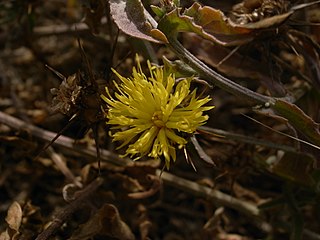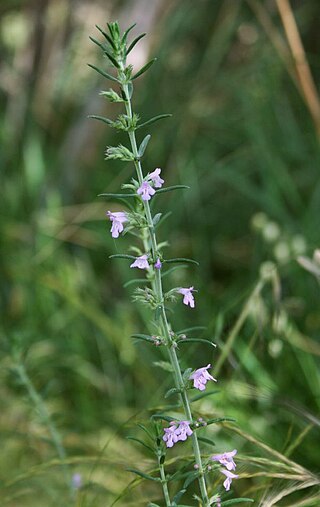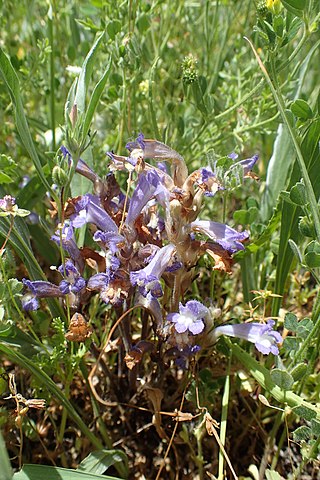
Sonchus is a genus of flowering plants in the tribe Cichorieae within the family Asteraceae and are commonly known as sow thistles. Sowthistles are annual, biennial or perennial herbs, with or without rhizomes and a few are even woody.

The Encyclopedia of Life (EOL) is a free, online encyclopedia intended to document all of the 1.9 million living species known to science. It aggregates content to form "pages" for every known species. Content is compiled from existing trusted databases which are curated by experts and it calls on the assistance of non-experts throughout the world. It includes video, sound, images, graphics, information on characteristics, as well as text. In addition, the Encyclopedia incorporates species-related content from the Biodiversity Heritage Library, which digitizes millions of pages of printed literature from the world's major natural history libraries. The BHL digital content is indexed with the names of organisms using taxonomic indexing software developed by the Global Names project. The EOL project was initially backed by a US$50 million funding commitment, led by the MacArthur Foundation and the Sloan Foundation, who provided US$20 million and US$5 million, respectively. The additional US$25 million came from five cornerstone institutions—the Field Museum, Harvard University, the Marine Biological Laboratory, the Missouri Botanical Garden, and the Smithsonian Institution. The project was initially led by Jim Edwards and the development team by David Patterson. Today, participating institutions and individual donors continue to support EOL through financial contributions.
Iris relicta is a plant species within the genus Iris, and it belongs to the subgenus Iris as well. This rare rhizomatous perennial originates from the mountains of Italy. It is of medium size, bearing purple flowers adorned with white beards. While it is seldom cultivated as an ornamental plant in temperate regions, its history has been perplexing. Initially mistaken as a variety of Iris germanica, it was later recognized as a distinct species, though it shared a name with another bearded iris. The clarification of its taxonomy only occurred in 1996.

Andreaea rothii, or Roth's andreaea moss, is a species of moss in the family Andreaeaceae native to North America and parts of Europe. This plant was described in 1807 by Weber and Mohr.

Ajuga iva, the southern bugle, is a species of perennial herb in the family Lamiaceae. They have a self-supporting growth form and simple, broad leaves. Individuals can grow to 5 cm. Subspecies include Ajuga iva subsp. iva and Ajuga iva subsp. pseudoiva.

Biscutella didyma, commonly known as buckler mustard, is a species of annual herb in the family Brassicaceae.

Catapodium rigidum, ferngrass, is a species of annual grass in the family Poaceae, distributed around the Mediterranean and the Middle East. It has been widely introduced throughout drier parts of the world, including parts of North America, South America, South Africa, Korea, Australia, and New Zealand. Individuals can reach 20 cm (8 in).

Centaurea nicaeensis is a plant species in the family Asteraceae.

Erodium chium is a species of flowering plant in the family Geraniaceae.
Freesia × kewensis is a species of plant in the family Iridaceae. It is an artificial hybrid between Freesia corymbosa and Freesia leichtlinii subsp. alba.
Malope malacoides is a species of plants in the family Malvaceae.

Micromeria graeca is a plant species in the family Lamiaceae.

Ononis alopecuroides is a plant species in the family Fabaceae
Ononis sieberi is a plant species in the family Fabaceae.
Ononis viscosa is a species of annual herb in the family Fabaceae. They have a self-supporting growth form and broad leaves. Individuals can grow to 0.18 m.

Phagnalon rupestre is a species of shrub in the family Asteraceae. They have a self-supporting growth form, simple, broad leaves and dry fruit. Individuals can grow to 0.25 m.

Phelipanche nana is a plant species in the family Orobanchaceae.

Plantago macrorhiza is a species of perennial herb in the family Plantaginaceae. Individuals can grow to 5 cm.

Sedum litoreum is a species of succulent annual herb in the family Crassulaceae. Individuals can grow to 3.7 cm. It is native to the central and eastern Mediterranean, from Corsica and Sardinia to Italy, Sicily, former Yugoslavia, Albania, Greece and the Greek Islands, Turkey, Cyprus, and the Levant.

Triglochin bulbosa is a species of perennial herb in the family Juncaginaceae. They have a self-supporting growth form and simple, broad leaves. They are associated with freshwater habitat.
















